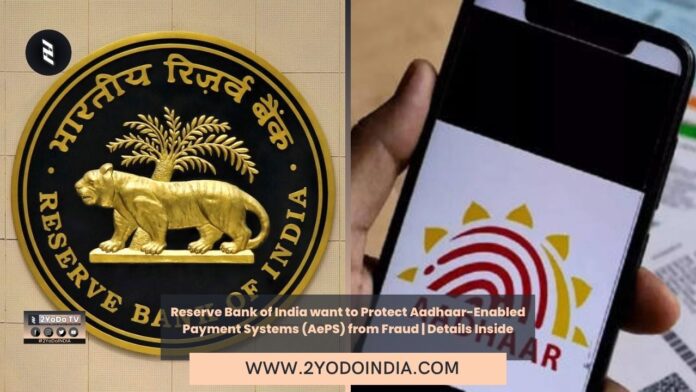With Aadhaar-enabled payment system (AePS) frauds is on the rise, Reserve Bank of India (RBI) plans to simplify the process for AePS service providers to join. Also, the RBI will add more measures to manage fraud in AePS.
What is an Aadhaar-Enabled Payment Systems (AePS)?
The Aadhaar-enabled payment system (AePS) allows customers to access their bank accounts using Aadhaar through a business correspondent.
AePS offers basic banking services including cash withdrawal, deposit, balance inquiry, mini statements, and Aadhaar-to-Aadhaar fund transfers.
To use AePS, customers need an account with a bank that supports AePS and must link their Aadhaar with their bank account.
Transactions on AePS require biometric authentication.
How Aadhaar-Enabled Payment Systems (AePS) Work?
To transfer money through AePS, you don’t require an OTP or bank account details.
For Aadhaar-enabled transactions, customers need to provide either their Aadhaar number or virtual ID with biometrics, at the Micro ATM manage by the business correspondent.
This process verifies the customer’s identity and authentication is done by the Unique Identification Authority of India (UIDAI).
AePS has become increasingly popular, particularly in rural areas, over the past few years.
So, according to the National Payments Corporation of India (NPCI) website, 35 commercial banks, 40 rural banks, and 52 cooperative banks provide Aadhaar-enabled payment system services.
In 2023 only, over 37 crore customers conduct transactions using AePS.
But, despite its use, the system faces challenges like inadequate infrastructure and security risks.
Aadhaar-Enabled Payment Systems (AePS) Frauds
As of now, the Aadhaar-enabled payment system lacks two-factor authentication.
This has led to instances where fraudsters gain access to Aadhaar card numbers and clone fingerprints, allowing them to fraudulently withdraw cash from bank accounts.
Also, some scamsters illegally obtain biometric information from users to commit fraud.
Senior citizens are particularly vulnerable to such scams due to their limited digital literacy.
RBI Plan to Protect Aadhaar-Enabled Payment Systems (AePS) from Fraud
The RBI is taking steps to enhance the security of Aadhaar-based online transactions by introducing a standardize and secure onboarding process for all.
This includes mandatory due diligence for AePS touchpoint operators, to be enforce by banks.
Also, the RBI will consider implementing further fraud risk management measures.
These initiatives, as said in the developmental and regulatory policies release by the Reserve Bank of India, aim to strengthen the security of the AePS system and make it more robust.
RBI Governor Shaktikanta Das announce these decisions during the Monetary Policy Committee (MPC) meeting on 8th February 2024.
RBI Deputy Governor T Rabi Sankar stress the need to ensure transaction safety, particularly in rural areas where this system is widely use.
He mention the possibility of using different technologies over time to enhance security.
Also, T Rabi Sankar said that all touchpoint operators will undergo a standardized and secure onboarding process, with room for incorporating further safety measures.
What to Expect of RBI’s Plan to Protect AePS from Fraud?
All these measures will benefit the Aadhaar-enabled payment system.
This innovative approach is expect to provide users with smoother and more convenient digital payments.
Also, the National Payments Corporation of India (NPCI) has issue directives to banks to prevent the misuse of customers’ credentials by scammers.
Banks are require to allow interoperable AePS cash withdrawal transactions only after Aadhaar-based biometric authentication of business correspondents and agents.
So, they must ensure that BHIM Aadhaar Pay transactions are not misuse for cash withdrawals and actively monitor transactions to prevent any potential misuse.





